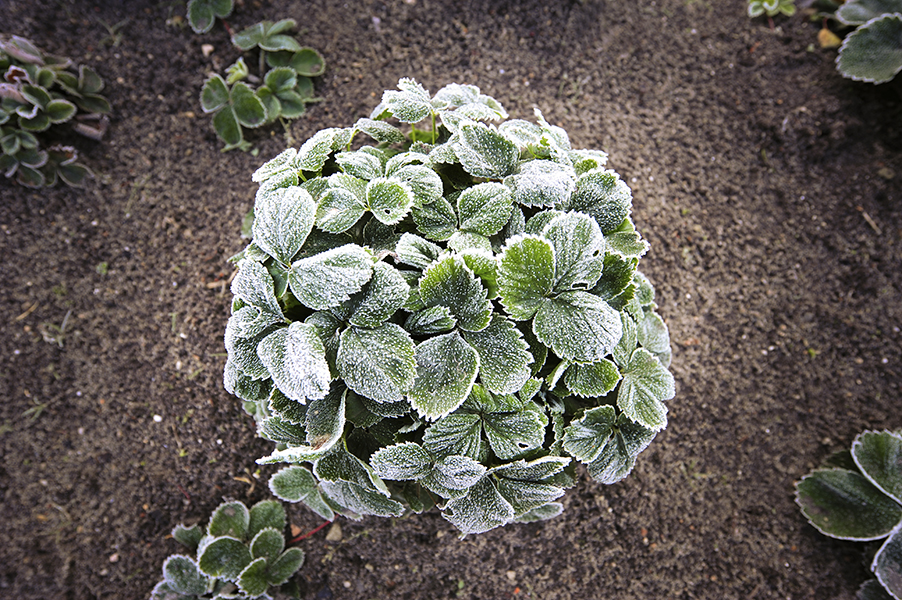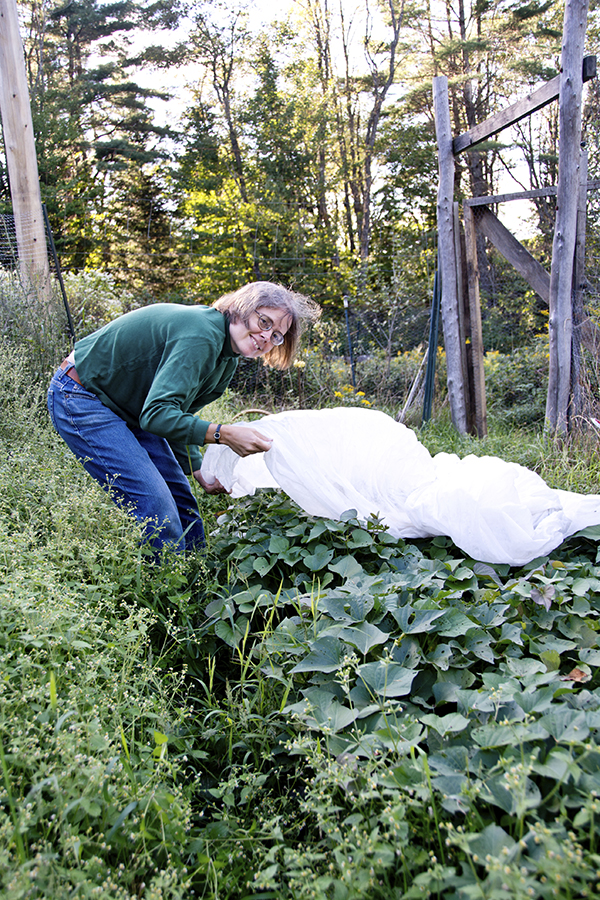
Preventing frost damage in your garden
Posted by Grange Co-op on 5th Oct 2017

You’ve worked hard to cultivate plants around your home and in your garden, so don’t let a one-night frost sabotage your efforts. Get your plants prepared for potential frost and breathe easier when the nighttime temperatures drop.
What is frost?
Dew forms on plants from the moisture in the air, and freezing temperatures turn that moisture into frost. Frost damages plants by forming ice crystals in plant cells – thus freezing those cells and keeping water from getting to plant tissues and disrupting fluid movement. Then when it gets warmer, those cells can burst, or rupture. You can tell when leaves are frost damaged when they appear water-soaked, shriveled, and are dark brown or black.
How to know when frost is unavoidable
In addition to watching weather reports and checking online, you can tell when frost is on the way when there’s a dry, still and clear night without clouds, and temperatures are 45 degrees or colder at around 10 p.m.
The temperature at which frost occurs isn’t necessarily just “freezing” at 32 degrees. It depends on type of plants and the growth stage. Plants are classified by the minimum temperatures they can tolerate – hardy plants can withstand short-term freezing while tender plants are liable to be injured or die in freezing temperatures. A good first step is to learn the range of temperatures your plants can take. When living in an area prone to frost, look up the hardiness of your plants in a guide such as the Sunset Western Garden Book. Generally, a reliable garden center will only stock plants ready to be planted out in their climate zone. The plants they move indoors at night are still too tender for planting out. Frequently the knowledgeable garden center will have items signed “hardy” or “frost tender”.
How to protect from frost?
There are a variety of ways to protect plants from frost damage – from long-term prevention months before a frost to covering methods the night of a potential frost.
Location is everything
You want to avoid heat radiation within your landscape, so utilize clever landscape design by choosing planting locations that will protect your plants when possible.
- Avoid planting tender plants, which are highly susceptible to frost damage, in open, exposed, or low spots where cold air causes the most damage. Place them along a south or west-facing wall that can absorb heat during the day and radiate that heat during the colder nighttime.
- Shrubs, trees, or other landscaping features such as fences can protect from wind.
- For container plants that you cannot bring inside, cluster them together in a sheltered spot near your home.
- With placement, you also want to consider soil and water drainage. You want to avoid planting in locations in which water can pool and freeze quickly.
Make sure there is enough water in the soil
- Ensure your soil will retain as much heat as possible by thoroughly watering the soil, with an exception of around succulents. This will help insulate the soil by retaining heat, protecting roots, and warming the air near the soil.
- A well-watered plant will sustain far less damage in a freeze than a thirsty plant.
- Mulching will also help maintain moisture in the ground and retain heat the plant absorbs during the day. Gardner & Bloome’s Soil Building Conditioner is a great product using as a top mulch, as well as Rogue Natural and Organic Planting Compost. Other options for mulching can be pine straw, hay, or peat moss.
Covering Your Plants

A potential frost is in the forecast and you’ve taken preventative measures of landscape design, and proper watering. Now you need to take the last steps to keep your plants warm and protected from freezing temperatures. It’s time to cover your plants, which helps lock in moisture and fight off a chance of frost.
- Cover your plants in the afternoon to create a dead air space between the plant and the outside air. A wide variety of coverings we carry will do. Options include blankets, sheets, cloth tarps, tablecloths, drop cloths, burlap bags, towels, newspaper, and other materials. A good rule of thumb is – the thicker, the better, and opaque coverings are also important.
- If you use plastic, make sure to use black plastic and elevate it above the plants because anywhere the plastic touches the plant will freeze.
- Drape the material close to the plant but not touching the foliage. You want to avoid allowing the exchange of air between the dead air space and the outside. This can be accomplished by using stakes or a makeshift frame.
- Make sure covers are long enough to reach the ground so that warm air doesn’t escape.
- Tiny holes in the material can help your plants breathe.
- For low plantings, mulch can be used as an effective cover.
- For small trees, you can increase the plant’s warmth by placing a 100-watt outdoor lamp or holiday lights in the tree’s interior, but make sure bulbs do not touch any of the covering material.
- Remove the coverings the first thing in the morning to allow your plants to absorb the sun’s heat, and also to make sure it doesn’t overheat.
What to do if plants are damaged by frost
Frost can damage plants but will not automatically kill them – plants are resilient. If there is damage, here are some tips to minimize the harm.
- Leave dead leaves and branches on the plant as they can help protect during the next freeze.
- Once all chance of frost is gone, prune off the dead material when you can see new growth emerging.
- With a loss of foliage, the plant won’t need as much water so water only enough to keep the damaged plants alive.
- Fertilize after the plant has recovered and has new growth.
For more gardening tips, you can also speak with the “Grange Gardeners” at your local Grange Co-op garden center, or visit grangecoop.com.
